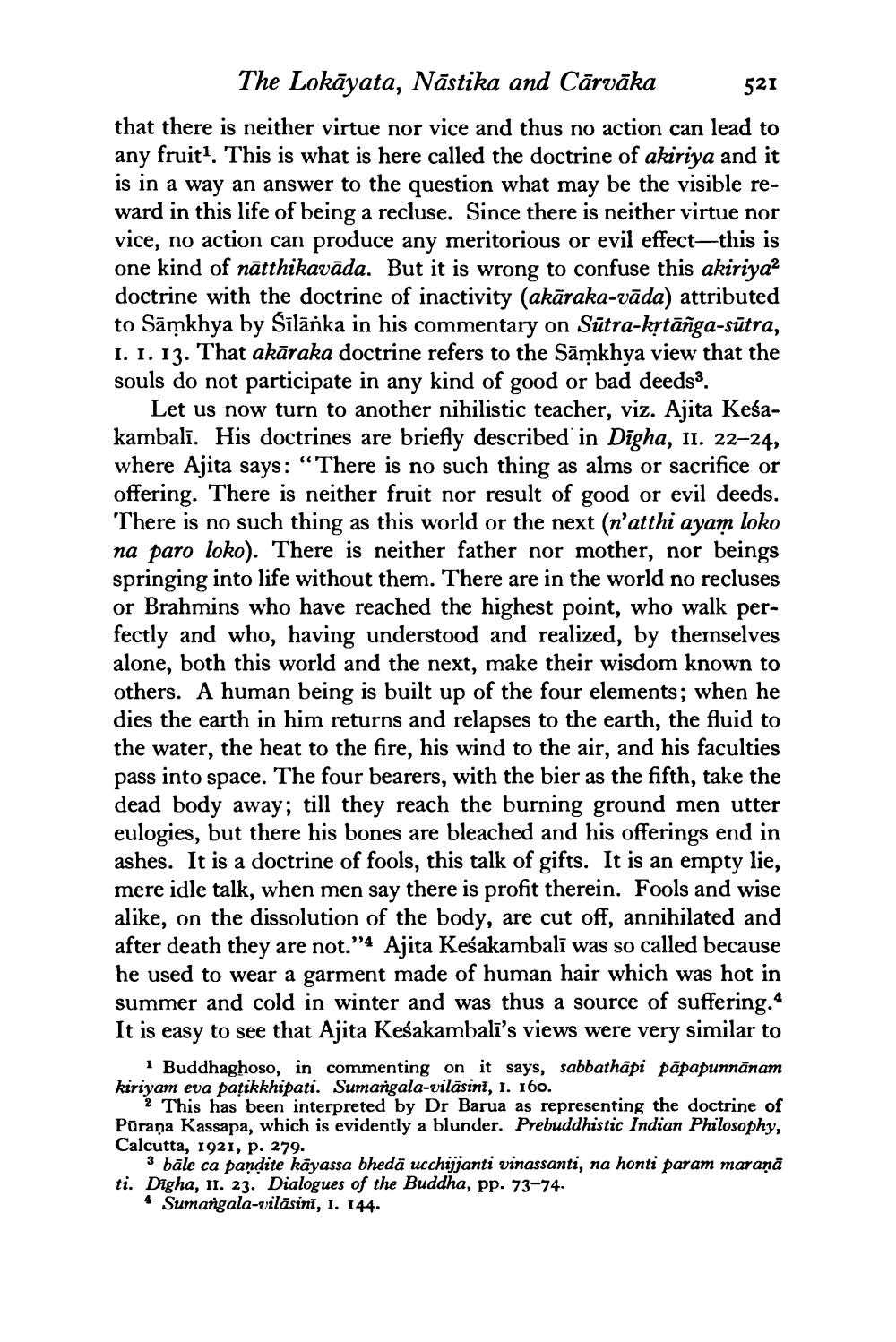________________
The Lokāyata, Nāstika and Cārvāka 521 that there is neither virtue nor vice and thus no action can lead to any fruit? This is what is here called the doctrine of akiriya and it
answer to the question what may be the visible reward in this life of being a recluse. Since there is neither virtue nor vice, no action can produce any meritorious or evil effect—this is one kind of nātthikavāda. But it is wrong to confuse this akiriya2 doctrine with the doctrine of inactivity (akāraka-vāda) attributed to Sāmkhya by Sīlānka in his commentary on Sūtra-kytāñga-sūtra, 1. I. 13. That akāraka doctrine refers to the Sāmkhya view that the souls do not participate in any kind of good or bad deeds.
Let us now turn to another nihilistic teacher, viz. Ajita Keśakambalī. His doctrines are briefly described in Dīgha, II. 22–24, where Ajita says: “There is no such thing as alms or sacrifice or offering. There is neither fruit nor result of good or evil deeds. There is no such thing as this world or the next (n'atthi ayam loko na paro loko). There is neither father nor mother, nor beings springing into life without them. There are in the world no recluses or Brahmins who have reached the highest point, who walk perfectly and who, having understood and realized, by themselves alone, both this world and the next, make their wisdom known to others. A human being is built up of the four elements; when he dies the earth in him returns and relapses to the earth, the fluid to the water, the heat to the fire, his wind to the air, and his faculties pass into space. The four bearers, with the bier as the fifth, take the dead body away; till they reach the burning ground men utter eulogies, but there his bones are bleached and his offerings end in ashes. It is a doctrine of fools, this talk of gifts. It is an empty lie, mere idle talk, when men say there is profit therein. Fools and wise alike, on the dissolution of the body, are cut off, annihilated and after death they are not."4 Ajita Keśakambalī was so called because
used to wear a garment made of human hair which was hot in summer and cold in winter and was thus a source of suffering. 4 It is easy to see that Ajita Keśakambali's views were very similar to
1 Buddhaghoso, in commenting on it says, sabbathapi papapunnānam kiriyam eva pațikkhipati. Sumangala-vilāsini, 1. 160.
2 This has been interpreted by Dr Barua as representing the doctrine of Pūraņa Kassapa, which is evidently a blunder. Prebuddhistic Indian Philosophy, Calcutta, 1921, p. 279.
3 bāle ca pandite kāyassa bhedā ucchijjanti vinassanti, na honti param maraņā ti. Digha, II. 23. Dialogues of the Buddha, pp. 73-74.
4 Sumangala-vilāsini, I. 144.




